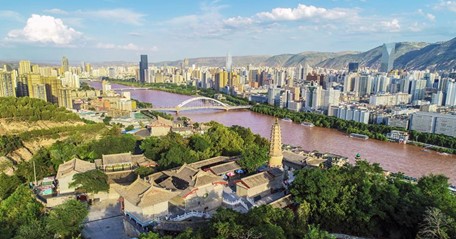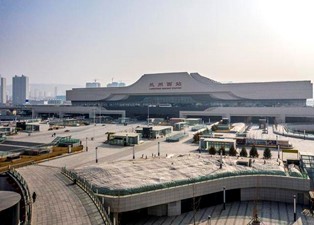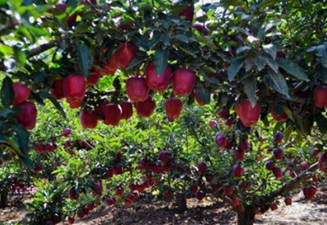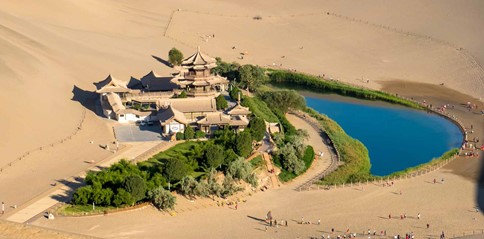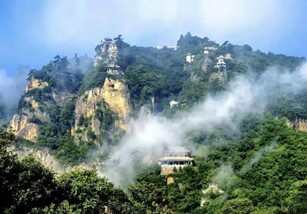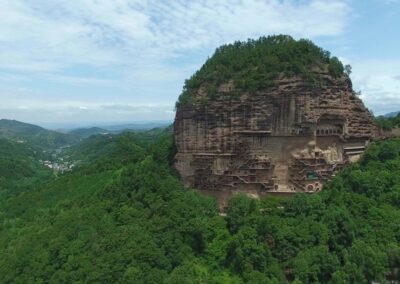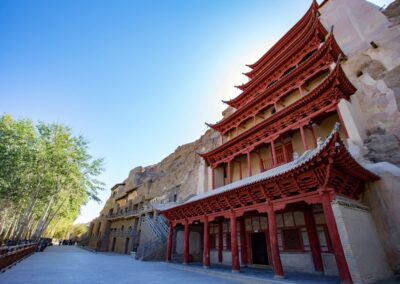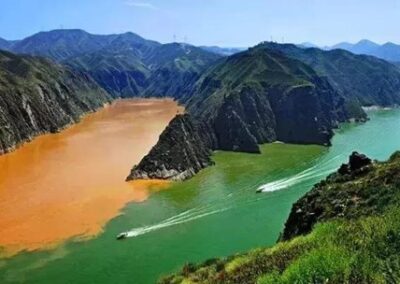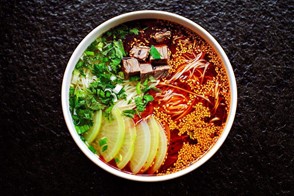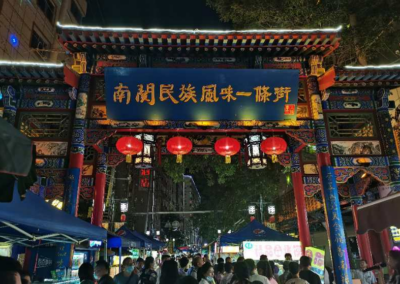Lanzhou overview
In 2012, Lanzhou built the Lanzhou New Area, the 5th new district in China and the 1st in Northwest China. It covers 1,744 square kilometers and attracted more than 760 projects with a total investment of 370 billion yuan.
In 2020, Lanzhou won the honorable title of “National Civilized City”. Its experience in controlling air pollution was promoted nationwide, and it won the “Award for Today’s Transformative Step 2015” at a Paris climate conference. Recently, Lanzhou actively participates in ecological protection and high-quality development of the Yellow River basin.
| Total area: | 13,100 km2 |
| Urban area: | 1,631.6 km2 |
| Residential population: | 4.36 million |
| Climate: | Temperate continental climate |
| Temperature: | January 0°C to 2°C; July 28°C to 30°C |
| Altitude: | 1520 meters |
Transport Link
The City was a main trade center along the Silk Road 2000 years ago playing a significant role in promoting economic and cultural exchange between China and the West. Today, it is an industrial base and communication hub for Northwest China, and the key city of the Silk Road Economic Belt Initiative.
Lanzhou enjoys being one of China’s nine major logistics hubs, 10 major logistics channels and 21 national logistics node cities. It is a strategic channel of the New Eurasian Land Bridge which supports China’s opening up to Central and Western Asia.
The Lanzhou West Railway Station is the largest passenger transport hub in western China. Lanzhou railway is the world’s longest high-speed railway with one-step construction. It forms a rapid transportation link between Lanzhou and central, east and southwest China.
Lanzhou Zhongchuan International Airport is an important facility in Northwest China. In 2020, it launched routes to 116 cities (domestic and international). Its growth rate is 9.31 percent higher than the national average. The third phase expansion of the airport with an investment of 34.37 billion yuanis expected to be completed in 2023. The enlarged airport can support 300 international air routes and an annual passenger throughput of 38 million.
Economy
With four digital optical cables integrated in Lanzhou, the city’s communication facilities have been ranked among the most advanced in China.
In 2020, the city’s total production value reached 288.67 billion yuan ($46.19 billion), an increase of 2.4 percent over the previous year.
The city has a national-level new district, Lanzhou New Area, and two national-level development zones, namely Lanzhou National High-tech Industrial Development Zone and Lanzhou Economic and Technical Development Zone. It strives to build four high-end industrial clusters of 100 billion yuan in advanced petrochemicals, equipment manufacturing, biomedicine, and green metallurgy. It also cultivates and expands in aerospace sectors, new materials, clean energy, nuclear fuel, new building materials, energy conservation and environmental protection, food processing, and tobacco products.
In addition, science and education foundation is strong in Lanzhou. There are over 1,200 scientific research institutions and 10 national key laboratories represented by the first large-scale heavy ion accelerator produced in China. Comparing with other medium size cities in China, Lanzhou has a high density of scientists and talented pool of human resources.
Ethnic groups
As of 2015, there are 36 ethnic groups in Lanzhou, mainly the “Hui” group, accounting for 3.6 percent of the total population of Lanzhou.
Resources
13.46% of the total land is forestry area with an abundance of wild animal and plant resources.Well-known Gansu specialties such as liquorice, Angelica sinensis, Codonopsispilosula, ephedra, Gentiana, podophyllum, cortex daphnes, rose and other Chinese herbal medicines are cultivated throughout the area.
Land resources include medium and low mountain forestry and pastoral areas, river valley vegetable and fruit areas, and low mountains and hills grain and oil areas. The complex and diverse land types make Lanzhou suitable for the development of agriculture, forestry, animal husbandry, non-staple food production and fishing industries.
History and culture
Lanzhou has a history of more than 2,200 years. It is one of the important birthplaces of Chinese culture. It intersected four cultures, namely the Yellow River culture, Silk Road culture, the Central Plains culture and culture of Xiyu (or the western regions). It has 10 major historical and cultural sites protected at the national level (including the Great Wall), 40 provincial historical and cultural sites and 109 historical and cultural sites protected at municipal and county levels.
29 museums are listed on the National Museum List with18,987 collected artifacts. Lanzhou has many cultural treasures protected as national intangible cultural heritages, such as the Taiping Drum and Yellow River water wheel production skills.
Food specialties
Lanzhou Beef Noodle is the most famous specialty in China and beyond. The noodles are pulled by hands and the clear soup broth from the essence of beef bones. Many specialties are influenced by the “Hui” minority culture, such as grilled, boiled or skewed of mutton. Other common foods are fried fresh lily bulbs, marinated ham, roast chicken, cold niangpi and Sanpaotai tea. The dishes are salty, fresh, tart, and spicy.

